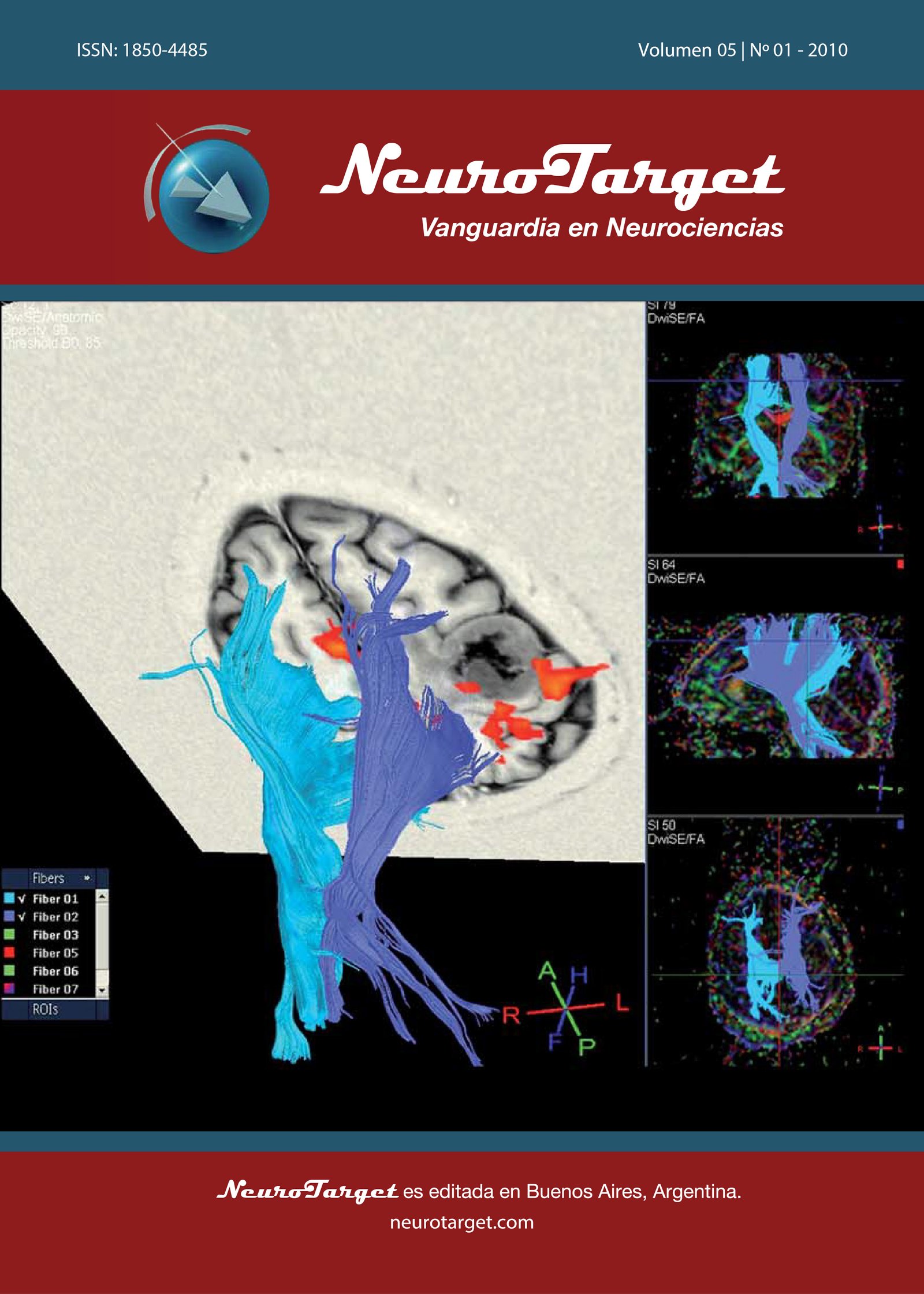Correlation of clinical and electrophysiological findings of experimental spinal cord injury in rats
DOI:
https://doi.org/10.47924/neurotarget2010304Keywords:
spasticity, spinal cord injury, clinic scale, F waveAbstract
Introduction: The experimental spinal injury at sacral level in rats provides an animal model with low morbidity than others with lesion at higher metameric levels. The information in literature concerning clinical quantification of tail spasticity in rats due to lesion at sacral level is scarce. There are no studies correlating the degree of tail spasticity with electrophysiological responses in an experimental animal model lesioning the spinal cord at this level. The purpose of this study is to evaluate the spasticity of rat tail using a clinical scale and validate it though the correlation with electrophysiological findings.
Materials and methods: Experimental spinal cord surgeries at a metameric sacral level were performed in Sprague Dawley rats to produce spasticity circumscribed to the tail. We followed up the specimens postoperatively with clinical and electrophysiological recordings, and categorized the spasticity with a semi quantitative scale. The electrophysiological registra- tions (M and F waves) were taken in the tail. Finally, the rats were sacrificed and verified the lesion with histopathology.
Results: All the animals with spinal lesion presented tail paresis after the second week. The results were the followings: five rats presented spasticity grade 2; one rat presented grade 3; and the last three, grade 4.The electrophysiology showed pattern responses correlated with the clinical evolution of spasticity.
Discussion: The present investigation showed the correlation between the degree of spasticity and the electrophysiological recordings, which indicate the grade of excitability of alpha motoneurons.
Conclusions: These models allow performing a semi quantitative evaluation of the clinical degree of spasticity and correlate it with electrophysiology.
Metrics
References
Coutts M, Keirstead HS. Stem cells for the treatment of spinal cord injury. Exp Neurol. 2008 Feb;209(2):368-77.
Bennett DJ, Sanelli L, Cooke CL, Harvey PJ, Gorassini MA. Spastic long- lasting reflexes in the awake rat after sacral spinal cord injury. J Neuro- physiol. 2004 May;91(5):2247-58.
Yorio A, Mannara F, Pennisi P, Figurelli S, Segura E. Changes in the F-wave of sacral segments by spinal cord injury in rats: clinical, histological and biochemical correlates. Clinical Neurophysiology. 2008;119:S172.
Li Y, Harvey PJ, Li X, Bennett DJ. Spastic long-lasting reflexes of the chronic spinal rat studied in vitro. J Neurophysiol. 2004 May;91(5):2236-46.
Harris RL, Putman CT, Rank M, Sanelli L, Bennett DJ. Spastic tail muscles recover from myofiber atrophy and myosin heavy chain transformations in chronic spinal rats. J Neurophysiol. 2007 Feb;97(2):1040-51.
Basso DM, Fisher LC, Anderson AJ, Jakeman LB, McTigue DM, Popovich PG. Basso Mouse Scale for locomotion detects differences in recovery after spinal cord injury in five common mouse strains. J Neurotrauma. 2006 May;23(5):635-59.
Gelderd JB, Chopin SF. The vertebral level of origin of spinal nerves in the rat. Anat Rec. 1977 May;188(1):45-7.
Mannará F, Figurelli S, Pennisi P, Segura E, Yorio A. Lesión experimental de la médula espinal sacra en la rata y correlato clínicoelectrofisiológico. En: Libro de Ponencias: LIII Reunión Anual de la Sociedad Argentina de Investigación Clínica. Mar del Plata; 19-22 de noviembre 2008. Medicina 2008;68 Supl II:146.
Kakinohana O, Hefferan MP, Nakamura S, Kakinohana M, Galik J, Tomori Z, et al. Development of GABA-sensitive spasticity and rigidity in rats after transient spinal cord ischemia: a qualitative and quantitative elec- trophysiological and histopathological study. Neuroscience. 2006 Sep 1;141(3):1569-83.
Joynes RL, Janjua K, Grau JW. Instrumental learning within the spinal cord: VI. The NMDA receptor antagonist, AP5, disrupts the acquisition and maintenance of an acquired flexion response. Behav Brain Res. 2004 Oct 5;154(2):431-8.
Carp JS, Tennissen AM, Chen XY, Wolpaw JR. H-reflex operant conditioning in mice. J Neurophysiol. 2006 Oct;96(4):1718-27.
Lee BH, Lee KH, Kim UJ, Yoon DH, Sohn JH, Choi SS, et al. Injury in the spinal cord may produce cell death in the brain. Brain Res. 2004 Sep 10;1020(1-2):37-44.
Kim Y, Aoki T, Ito H. Evaluation of parameters of serially monitored F-wave in acute cervical spinal cord injury. J Nippon Med Sch. 2007 Apr;74(2):106- 13.
Gosgnach S, Lanuza GM, Butt SJ, Saueressig H, Zhang Y, Velasquez T, Riethmacher D, Callaway EM, Kiehn O, Goulding M. V1 spinal neurons regulate the speed of vertebrate locomotor outputs. Nature. 2006 Mar 9;440(7081):215-9.
Chen Y, Chen XY, Jakeman LB, Chen L, Stokes BT, Wolpaw JR. Operant conditioning of H-reflex can correct a locomotor abnormality after spinal cord injury in rats. J Neurosci. 2006 Nov 29;26(48):12537-43.
Carp JS, Tennissen AM, Chen XY, Wolpaw JR. Diurnal H-reflex variation in mice. Exp Brain Res. 2006 Jan;168(4):517-28.
Downloads
Published
How to Cite
Issue
Section
License
Copyright (c) 2010 Francisco Alberto Mannará, Alberto Yorio, Héctor Coirini, Silvina Figurelli, Enrique Segura

This work is licensed under a Creative Commons Attribution 4.0 International License.
The article is distributed under the Creative Commons Attribution 4.0 License. Unless otherwise stated, associated published material is distributed under the same licence.







